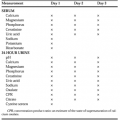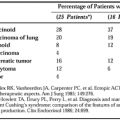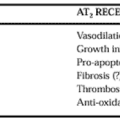IODOTHYRONINES
Part of “CHAPTER 33 – THYROID FUNCTION TESTS“
PROTEIN BOUND CONCENTRATIONS
Serum thyroxine (T4) concentration was, for many years, the most useful first-line test of thyroid function. Historically, T4 was estimated by measuring the serum protein bound iodine or the butanol extractable iodine; these measures are no longer used. (In suspected iodide ingestion, the protein bound iodine is much greater than the T4.) Serum T4 is determined almost exclusively by RIA; values in euthyroid patients range between 5 and 12 μg/dL. In hyperthyroidism, higher levels are present, and in hypothyroidism, lower levels are seen.
In general, the level of serum triiodothyronine (T3), the most active thyroid hormone, varies in parallel with the T4 level. Healthy subjects have values of 80 to 200 ng/dL, with higher levels occurring in hyperthyroidism. Indeed, the T3 levels may increase despite a normal serum T4 level, a condition known as T3 toxicosis. Whereas T4 is usually low in hypothyroidism, serum T3 is often in the normal range, possibly owing to increased conversion of T4 to T3. Also, the peripheral conversion of T4 to T3 is exquisitely sensitive to acute stresses of many causes. Thus, a low serum T3 level is to be expected in many nonthyroidal illnesses3, whereas serum T4 levels may be low, normal, or elevated.
Serum reverse T3 (rT3) ranges from 10 to 60 ng/dL in euthyroid patients. Like T4, serum rT3 level is high in hyperthyroidism and low in hypothyroidism. In nonthyroidal illness, serum rT3 concentrations are often elevated,4 whereas T4 levels are normal or low, and T3 levels are reduced. The discrepant results for T3 and rT3 in such disorders have made rT3 measurements clinically useful in differentiating primary hypothyroidism from acute illness.
Although RIAs have been developed for the diiodothyronines,4 monoiodothyronines,5,6 measurement of and T4 and T3 sulfates7,8, these iodothyronine metabolites has no current clinical utility.
Stay updated, free articles. Join our Telegram channel

Full access? Get Clinical Tree






